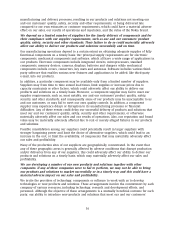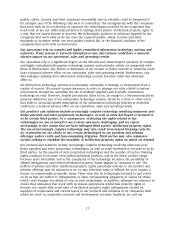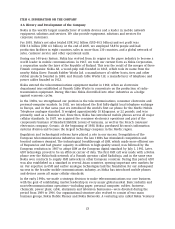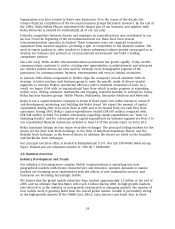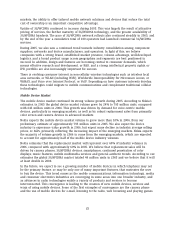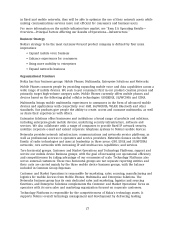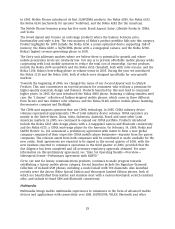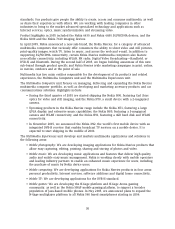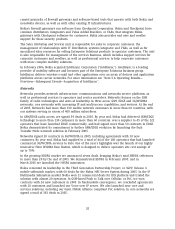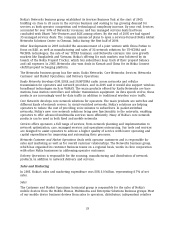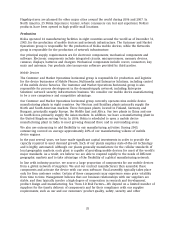Nokia 2005 Annual Report Download - page 27
Download and view the complete annual report
Please find page 27 of the 2005 Nokia annual report below. You can navigate through the pages in the report by either clicking on the pages listed below, or by using the keyword search tool below to find specific information within the annual report.markets, the ability to offer tailored mobile network solutions and devices that reduce the total
cost of ownership is an important competitive advantage.
Uptake of 3G/WCDMA continued to increase during 2005. This was largely the result of attractive
pricing of services, the further maturity of 3G/WCDMA technology, and the greater availability of
3G/WCDMA handsets. The pace of 3G/WCDMA network rollouts also continued steadily in 2005, and
by the end of the year a cumulative total of 100 operators had launched commercial 3G/WCDMA
services.
During 2005, we also saw a continued trend towards industry consolidation among component
suppliers, networks and device manufacturers, and operators. In light of this, we believe
companies with a strong brand, established market presence, volume advantage, well-developed
logistics, and a broad product range across geographies and segments are best positioned to
succeed. In addition, design and features are becoming central to consumer demands, which
means effective research and development, or R&D, and a strong intellectual property rights, or
IPR, portfolio are also increasingly important for success.
There is evolving consumer interest in non-cellular wireless technologies such as wireless local
area networks, or WLAN (including WiFi), Worldwide Interoperability for Microwave Access, or
WiMAX, and Voice over Internet Protocol, or VoIP. Depending on how customer interests develop,
these technologies could migrate to mobile communications and complement traditional cellular
technologies.
Mobile Device Market
The mobile device market continued its strong volume growth during 2005. According to Nokia’s
estimates, in 2005 the global device market volume grew by 24% to 795 million units, compared
with 643 million units in 2004. This growth was driven by demand for voice-centric mobile
devices, particularly in emerging markets, as well as by robust replacement sales from primarily
color screen and camera devices in advanced markets.
Nokia expects the mobile device market volume to grow more than 10% in 2006, from our
preliminary estimate of approximately 795 million units in 2005. We also expect the device
industry to experience value growth in 2006, but expect some decline in industry average selling
prices, or ASPs, primarily reflecting the increasing impact of the emerging markets. Nokia expects
the majority of volume growth in 2006 to come from the emerging markets, which are expected
to account for approximately half of the mobile device industry volumes.
Nokia estimates that the replacement market will represent over 60% of industry volumes in
2006, compared with approximately 60% in 2005. We believe that replacement sales will be
driven by camera phones, 3G/WCDMA devices, smartphones, continued penetration of color
displays, music features, mobile multimedia services and general aesthetic trends. According to our
estimates the global 3G/WCDMA market totaled 44 million units in 2005 and we believe that it will
at least double in 2006.
In the future, we expect to see a growing number of mobile devices in which telephony may not
be the primary feature, or may be only one of many important features, that motivates the user
to buy the device. This trend comes as the mobile communications, information technology, media
and consumer electronics industries are converging in some areas into one broader industry, and
as advances in radio technologies enable a variety of products and services to become
interconnected. This convergence is leading to the creation of new mobile devices, services and
ways of using mobile devices. Some of the first examples of convergence are the camera phone
and the use of mobile devices for e-mail, listening to the radio, web browsing and playing games.
25



